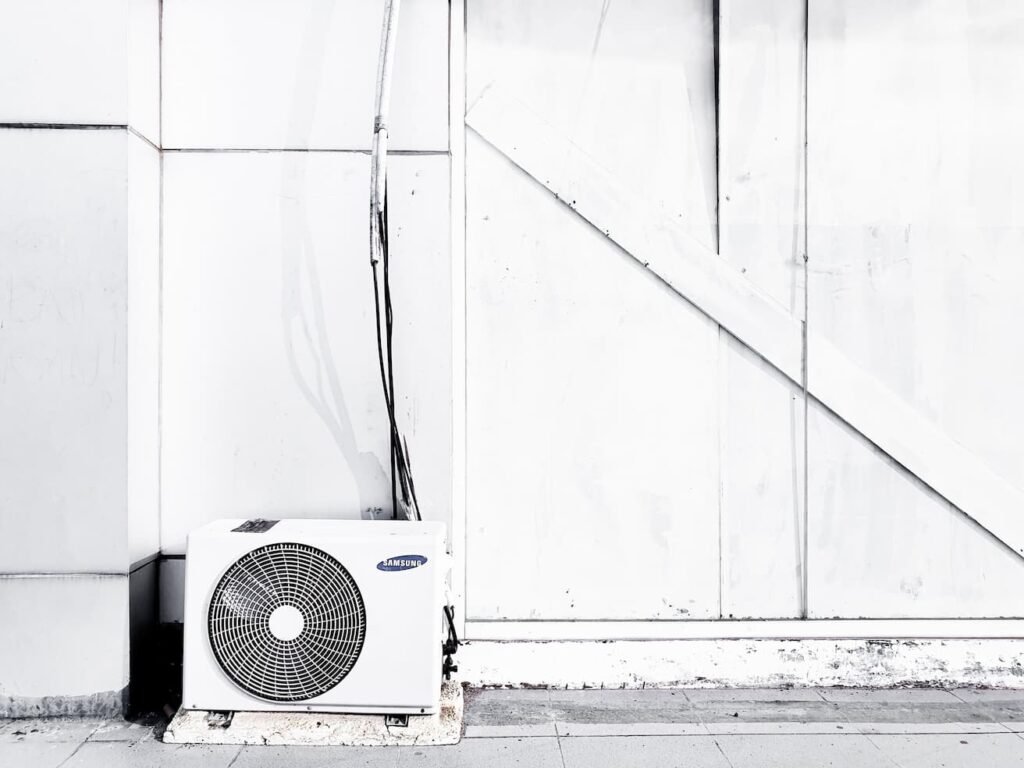Refrigerant is a fluid used in air conditioners and refrigerators to transfer heat. It is a volatile, man-made chemical that evaporates easily and is also non-toxic and non-flammable. Refrigerant circulates through a closed system of coils and piping in an air conditioner or refrigerator, and as it evaporates, it removes heat from the air or food inside.
How Does Refrigerant Work?
The working fluid in a typical air conditioner or refrigerator is a chemical called Freon. Freon is a chlorofluorocarbon (CFC), which contains chlorine, fluorine, and carbon. CFCs were once widely used as refrigerants because they are non-toxic, non-flammable, and very effective at transferring heat. However, CFCs are also known to contribute to the depletion of the Earth’s ozone layer, so they are being phased out in favor of more environmentally-friendly refrigerants.
Modern Refrigerants
- R-134a: One of the most common refrigerants used today is called R-134a. R-134a is a hydrofluorocarbon (HFC), which means it contains hydrogen, fluorine, and carbon. HFCs do not deplete the ozone layer, but they are powerful greenhouse gases. For this reason, the use of R-134a is being phased out in favor of even more environmentally-friendly refrigerants.
What is Refrigerant in AC?
The refrigerant in an air conditioner is what transfers heat from the inside of your home to the outside. In a typical air conditioner, the refrigerant circulates through a closed system of coils and pipes. As the refrigerant evaporates, it removes heat from the air inside your home. The refrigerant then travels to the outside unit of your air conditioner, where it releases the heat it has absorbed.
-
Sealed System: The refrigerant in your air conditioner is under high pressure, so it needs to be kept in a sealed system. If the system is not sealed properly, the refrigerant can leak out. A leaky air conditioner will not be able to transfer heat properly and will not cool your home effectively.
-
Recharging: The refrigerant in your air conditioner needs to be replaced from time to time. When the time comes to replace the refrigerant, a trained technician will add the new refrigerant to the system and evacuate the old refrigerant. This process is called recharging the air conditioner.
How Does Refrigerant Work in a Car?
The air conditioner in your car uses the same principles as a central air conditioner, but the process is reversed. In a car, the refrigerant circulates through a system of coils and pipes in the opposite direction. As the refrigerant evaporates, it absorbs heat from the air outside your car. The refrigerant then travels to the inside unit of your car, where it releases the heat it has absorbed.
-
Sealed System: The refrigerant in your car’s air conditioner is under high pressure, so it needs to be kept in a sealed system. If the system is not sealed properly, the refrigerant can leak out. A leaky air conditioner will not be able to transfer heat properly and will not cool your car effectively.
-
Recharging: The refrigerant in your car’s air conditioner needs to be replaced from time to time. When the time comes to replace the refrigerant, a trained technician will add the new refrigerant to the system and evacuate the old refrigerant. This process is called recharging the air conditioner.
Additional Considerations
Environmental Impact
The evolution of refrigerants is closely tied to environmental considerations. While older refrigerants like Freon are being phased out due to their ozone-depleting properties, newer refrigerants such as R-134a, though safer for the ozone layer, still pose significant global warming risks. The industry continues to search for more sustainable alternatives.
Safety Precautions
Handling refrigerants requires care due to their high-pressure nature. Both in home and car air conditioning systems, maintaining a sealed system is crucial to prevent leaks, which can lead to inefficiency and environmental harm.
Professional Maintenance
Proper maintenance and professional servicing are key to ensuring your refrigerant system operates efficiently. Regular check-ups can prevent leaks, ensure optimal performance, and extend the life of your air conditioning units.
Frequently Asked Questions (FAQs)
What are the signs of low refrigerant in an air conditioner?
Common signs include reduced cooling efficiency, longer cooling cycles, higher energy bills, and ice buildup on the evaporator coils.
How often should refrigerant be replaced in an AC unit?
Refrigerant should only need to be replaced if there is a leak. If your system is properly maintained and sealed, the refrigerant should last for many years.
Can I replace the refrigerant in my AC unit myself?
Replacing refrigerant typically requires specialized knowledge and equipment. It is best to hire a trained technician to handle the process to ensure it is done safely and correctly.
What are the environmental concerns with refrigerants?
Older refrigerants like CFCs and HCFCs deplete the ozone layer, while newer ones like HFCs, although better for the ozone, are potent greenhouse gases. Efforts are ongoing to develop refrigerants with lower environmental impacts.
Are there alternative refrigerants that are eco-friendly?
Yes, there are newer refrigerants such as R-410A and R-32 that have lower global warming potential and are being adopted in newer systems to reduce environmental impact.
How can I prevent refrigerant leaks?
Regular maintenance, including checking and sealing any leaks, is essential. Ensure that installation and servicing are done by qualified professionals to prevent potential leaks.
Understanding how refrigerant works and the importance of maintaining it properly can help you keep your air conditioning systems running efficiently and environmentally friendly. Regular professional maintenance and being aware of the signs of refrigerant issues will ensure your systems continue to provide effective cooling.



